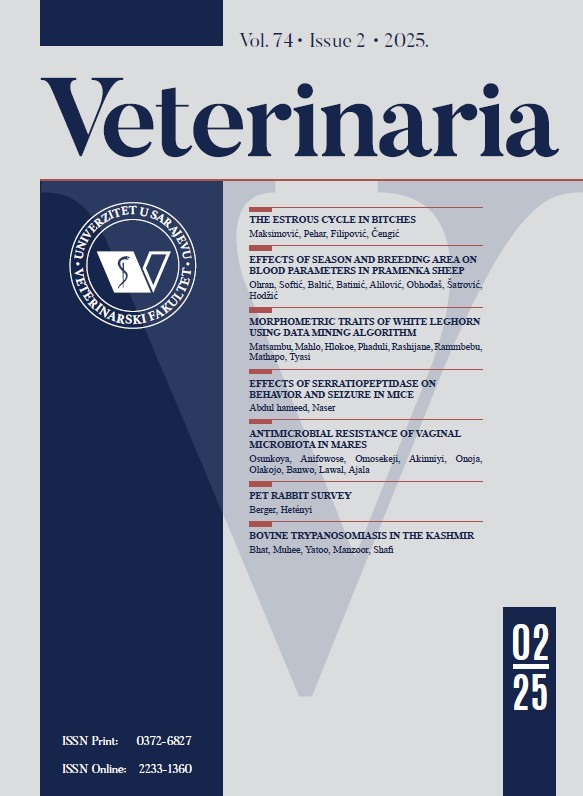Intestinal helminths of wild Canidae from the Kazakhstan steppe ecosystems
Keywords:
helminths, wolf, fox, corsac, prevalence, Kazakhstan, zoonosesAbstract
An epidemiological study of helminths in 39 wolves (Canis lupus), 15 foxes (Vulpes vulpes) and 13 corsacs (Vulpes corsac) collected from the steppes of the central, northern and western regions of Kazakhstan in 2018-2019, revealed 11 helminth species at autopsy, including pathogens of such zoonoses as echinococcosis, trichinellosis and toxocariasis. Species Taenia taeniaformis (prevalence 7.7%), Dipylidium caninum (2.6%), Echinococcus multilocularis (2.6%), Toxocara canis (10.3%) and Dirofilaria immitis (2.6%) were found only in wolves. Prevalence of Alaria alata in corsacs was 7.7% and in wolves 5.2%. Taenia spp. was found in 40% of foxes and 43.6% of wolves. Infection level with Macracanthorynchus catulinus among foxes was 26.7%, and in wolves 2.6%. Trichinella spp. larvae infected 6.7% of foxes and 17.9% of wolves. Mesocestoides lineatus were noted in all species of canine (V. corsac, V. vulpes, C. lupus) with the prevalence of 7.7%, 13.3% and 2.6%, and Toxascaris leonine infected 7.7%, 6.7% and 5.61% of these species of predators, respectively. Thus, populations of wild Canidae are forming natural foci of zoonotic invasions in the habitat regions.
Downloads
Published
How to Cite
Issue
Section
License
Copyright (c) 2020 VETERINARIA

This work is licensed under a Creative Commons Attribution 4.0 International License.








